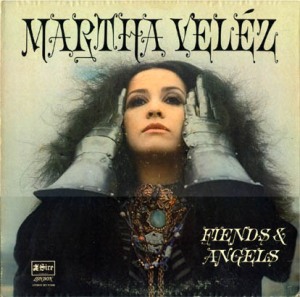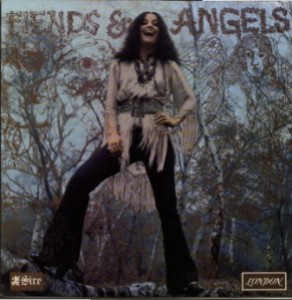Not for the feint of heart. An unrelenting trip through some of the best guitar solos of the late 60s and early 70s (some actually recorded later), with a few respites, notably some pysch blues-rock and N’Awlins tunes from Dr. John. Otherwise an onslaught of blues-rock guitar solos to quench your appetite.
Tag Archives: John Mayall
Mick Taylor finally arrives in America
Last July, blues guitarist Mick Taylor was scheduled to play four shows in New England during an American Tour, his first gigs in the U.S. since 2007. The entire tour was canceled, though, after Taylor was diagnosed with a blood clot in his chest and pleurisy.
 Recovered and looking healthy, Taylor rescheduled the tour for this spring and arrived in Boston Wednesday night. His five-piece group, which includes notable keyboardist Max Middleton, played in Northampton Thursday at the Iron Horse Music Hall to an enthusiastic and rowdy capacity crowd.
Recovered and looking healthy, Taylor rescheduled the tour for this spring and arrived in Boston Wednesday night. His five-piece group, which includes notable keyboardist Max Middleton, played in Northampton Thursday at the Iron Horse Music Hall to an enthusiastic and rowdy capacity crowd.
Though the band was jet-lagged, as Taylor mentioned, they shook off the rust and ran through a 1 1/2-hour set that showcased Taylor’s brilliant single-string and slide guitar work. The outfit was a bit on the loose side but still rocked hard throughout. Taylor’s voice, which is pleasing if not technically adept, carried off some of his own best-known tunes to his loyal following and some other more widely-known material.
Taylor, best known as the 17-year-old wunderkind of John Mayall’s Bluesbreakers in 1968-69, replacing Peter Green who departed for Fleetwood Mac, or as the ideal replacement for the fired Brian Jones in the Rolling Stones, giving that band one of its most accomplished lineups, is now in his early 60s and bit more rotund than that slim, young, baby-faced guitar player from what was a magical time for blues musicians. But he seemed happy, ready to please and rocking throughout his group’s set, showing alternately tender and fiery musicianship as he soloed frequently. Continue reading Mick Taylor finally arrives in America
Mayall still living in the blues

John Mayall has been an ambassador of the blues for parts of seven decades. At 76, Mayall is still rocking and commandeering yet another blues outfit of accomplished musicians.
At the Infinity Music Hall in Norfolk Sunday, Mayall ran through a two-hour set after quietly selling CDs and graciously signing anything from tickets to album covers in the club’s ticket office room. After the show he hustled through the crowd to get back to his display table with CDs of his latest album Tough.
This is a busy and active man for 76 and he still sings in his unique high-pitched, blues-flavored style, plays a mean boogie-leaning piano, adds a 12-string guitar on one tune in this night’s set and has probably never sounded better on harmonica, which he played frequently during the show.
Although many cite Alexis Korner and Cyril Davies as true fathers of the British Blues, it’s Mayall that has that moniker associated with him and none deserves it more.
He brought attention more than any other Brit to the wealth of American bluesman in the 1960s who were being virtually ignored by the U.S. public, and with a string of quality lineups through the ’60s and ’70s helped reestablish blues in this country as well as the U.K., being at the forefront of electrified and modern blues interpretation.
 Don’t forget the guitar players who passed through Mayall’s Bluesbreakers: Eric Clapton, on the original Bluesbreakers album often dubbed Beano; Peter Green, founding member of Fleetwood Mac; and Mick Taylor, later a Rolling Stone, all played with The Bluesbreakers, learning and trendsetting with Mayall as the father figure.
Don’t forget the guitar players who passed through Mayall’s Bluesbreakers: Eric Clapton, on the original Bluesbreakers album often dubbed Beano; Peter Green, founding member of Fleetwood Mac; and Mick Taylor, later a Rolling Stone, all played with The Bluesbreakers, learning and trendsetting with Mayall as the father figure.
Was there a more revolutionary electric blues album than Beano for guitarists? Wasn’t Green singled out by American bluesman, in particular B.B. King, as the one who scared them the most as a player.
And Taylor played in arguably the Stones’ best era or at least last, great era as the world’s greatest rock ‘n roll band. Continue reading Mayall still living in the blues
Hidden treasure
For years, the album Fiends & Angels has been one of the best kept secrets from the late 1960s blues-rock scene. Finally in 2008, the independent CD label Wounded Bird, which specializes in albums that the majors refuse to reissue, released this Martha Velez gem.
 Until then, it had fetched rather pricey numbers on auction sites despite not having been a big seller at the time of its release in 1968. Still it was one of the defining blues-rock albums of the times, bringing together an almost perfect combination of singer, players and producer for a raw blues outing with unbridled energy. And some of the best playing by some of England’s best musicians.
Until then, it had fetched rather pricey numbers on auction sites despite not having been a big seller at the time of its release in 1968. Still it was one of the defining blues-rock albums of the times, bringing together an almost perfect combination of singer, players and producer for a raw blues outing with unbridled energy. And some of the best playing by some of England’s best musicians.
Not available in the album credits and still not known completely, the personnel included, Eric Clapton, guitar; Jack Bruce (Cream), bass; Mitch Mitchell (Jimi Hendrix) and Jim Capaldi (Traffic), drums; Brian Auger (Oblivion Express), organ; Christine McVie (Chicken Shack, later Fleetwood Mac), piano; Keef Hartley, drums, and Chris Mercer, sax (Keef Hartley Band, John Mayall); Chris Wood (Traffic), sax and flute; and Duster Bennett, harmonica. That’s just a portion of the list.
Velez is a New Yorker, who studied opera at a young age and later attended the High School for the Performing Arts in Manhattan. She also joined a touring folk group, the Gaslight Singers, in college (Long Island University) and later had several lead roles on Broadway, including Hair. So how did she wind up recording her first solo album in England with all these prominent blues-rock musicians?
While recording a demo in New York with producer Richard Gottehrer, Seymour Stein of Sire Records was in the studio by coincidence. They immediately wanted to sign Velez and when it was revealed she loved the blues and particularly the material Cream was doing, they hooked her up with Mike Vernon, an English blues producer who had worked with the early Fleetwood Mac, John Mayall and later Ten Years After, among many others. He was also the founder of the blues label, Blue Horizon.
Vernon gathered together the elite group of musicians and a torrent of hot, inspired performances was unleashed on the material, matched perfectly to Velez’s voice, which has a trained quality but can be raunchy when needed.
 The guitar solos are ferocious on most cuts and although Clapton is said to have played on only four, he is extremely recognizable on the heavy groove of Lightnin’ Hopkins’ Feel So Bad, I’m Gonna Leave You (perhaps the album’s best two tracks), It Takes A Lot To Laugh, It Takes A Train To Cry and In My Girlish Days. This was confirmed on a Velez compilation, Angels Of The Future Past, released on CD in the late ’80s. The other solos are just as powerful and inventive, perhaps attributable to the only listed guitarist on the session, Rick Hayward, although Spit James (Keef Hartley) and Paul Kossoff (Free) are said to have also participated.
The guitar solos are ferocious on most cuts and although Clapton is said to have played on only four, he is extremely recognizable on the heavy groove of Lightnin’ Hopkins’ Feel So Bad, I’m Gonna Leave You (perhaps the album’s best two tracks), It Takes A Lot To Laugh, It Takes A Train To Cry and In My Girlish Days. This was confirmed on a Velez compilation, Angels Of The Future Past, released on CD in the late ’80s. The other solos are just as powerful and inventive, perhaps attributable to the only listed guitarist on the session, Rick Hayward, although Spit James (Keef Hartley) and Paul Kossoff (Free) are said to have also participated.
Jack Bruce is equally recognizable for his driving bass lines, all tight, punchy and restrained. Bennett blows heavy duty harp on both I’m Gonna Leave You and Feel So Bad, and Vernon also made liberal use of horns, giving the sessions yet another dimension.
The album contains so many other jewels: Velez’s funky composition Swamp Man, which holds the album’s title in the lyrics; the Joplin-esque slow blues A Fool For You; a cover of Etta James’ Tell Mama; the moderate shuffle of a smouldering Drive Me Daddy, over which Velez wails; Come Here Sweet Man, a delicate Velez original; and Let The Good Times Roll, the suitable rollicking closer. A great selection of songs.
Velez went on to record four other albums in the ’70s, including a reggae release, Escape To Babylon, produced by Bob Marley. She never fully returned to an album of all blues, although she did work with Vernon one more time on Matinee Weepers. Married to Keith Johnson, noted trumpet player with the Paul Butterfield Blues Band and Van Morrison, she also sang with Morrison’s band for a while. All her records, with the exception of her second, Hypnotized, are available from Wounded Bird.
You are unlikely to find Wounded Bird releases in a big music or electronics store at the mall. They are readily available at places such as Amazon. But a trip to the label’s web site is preferred because perusing its catalogue, you’ll find so many other long lost albums that haven’t seen the light of day on a major label.
My vinyl version of Fiends & Angels is still one of my most treasured from that time period. Even one in funky condition is fetching as much as $50 on eBay, despite the CD release. You have to love that album cover, too. The second image is from the UK release. For the record, Velez’s full name is Martha Carmen Josephine Hernandéz Rosario de Veléz. That’s an earful and so is this classic album.
 His influence may very well reach the furthest of the three Kings with Eric Clapton and Peter Green among his disciples. And I played with him in a one-off concert in New York in the early ’70s. But more on that later.
His influence may very well reach the furthest of the three Kings with Eric Clapton and Peter Green among his disciples. And I played with him in a one-off concert in New York in the early ’70s. But more on that later.